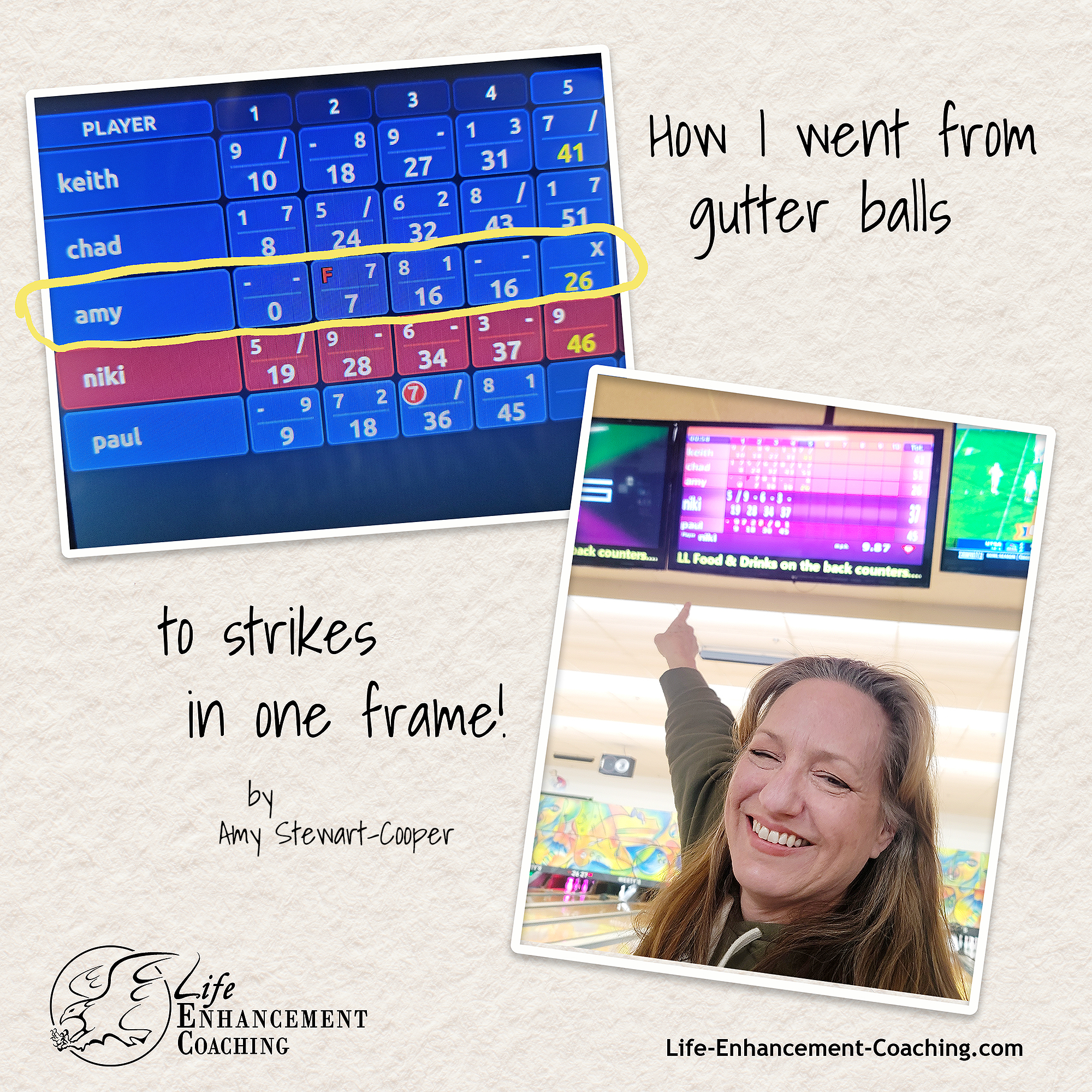

From Gutter Balls to Strikes
🎳 I went bowling for the first time in 40+ years,
with my husband and friends who are actually pretty good.
My score?
· Gutter balls.
· A foul (momentum carried me over the line).
· I actually hit some pins.
· More gutter balls.
· A strike!
❓ How did that happen?
After my 4th frame, I was like, “I’m a martial artist, I should be able to figure this out.”
I went to the bar to get a drink, and I mentally ran through my repertoire of kata.
❗ One worked.
Not a perfect match, but the cadence was similar: “set, step, step, step/throw.”
➡️ My next ball, I thought, “I’m just doing kata with this bowling ball. Not bunkai [the specific applications], but the principles.”
🎉 Strike! And several more strikes after that.
I went from crappy to competitive in one frame.
💡 Why am I telling you this story?
Because the ADHD principles here can work in your leadership:
🔶 Pattern recognition
🔷 Flow State
🔶 Pattern recognition
People with ADHD are pattern recognition machines!
👀 We can look sideways to find a solution.
The kata I chose was not a perfect match,
but the principles were close enough to feel familiar
which stopped me from micromanaging myself.
🔷 Flow State
My solution wasn’t “try harder”. It was “try differently.”
Find an entry point that felt familiar.
➡️ This allowed me to
🔹 step out of my head
🔹 not micromanage my every move
🔹 and let the familiar rhythm guide me
Beneath the gutter balls and strikes are ADHD leadership truths:
✔️ Stepping back stops the reactive loop
✔️ Finding a familiar entry point speeds problem solving
✔️ Simplification creates clarity
✔️ Flow in leadership = calm under pressure
🗨️ What outside-the-office skill has secretly leveled up your leadership?
✨ The 21st century needs ADHD Leaders.
If this is you, I want to support you.
💪 Ready to start?
Book a free exploration call.
👀 Just curious?
Comment. DM me. Keep reading my posts.
Explore My Most Popular Themes
If this post landed for you, I’d be honored by your support.



